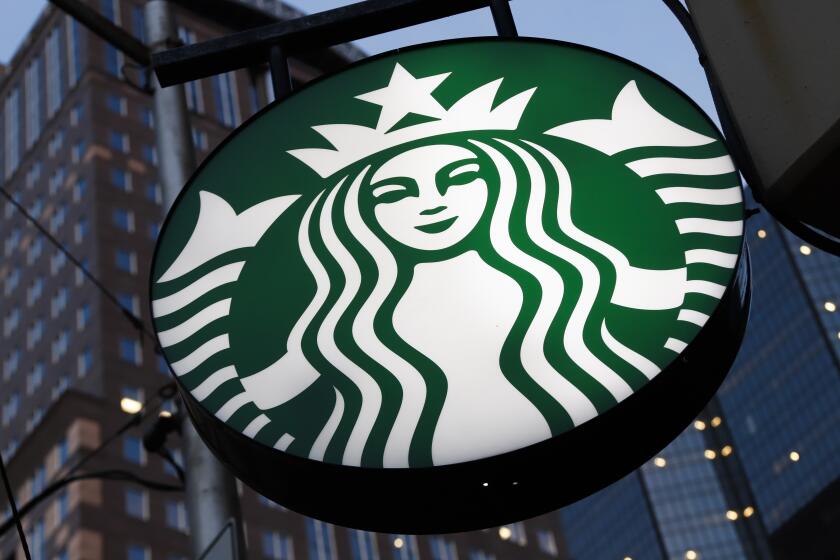Economy Expands at Rate of 4.2%
WASHINGTON — The U.S. economy grew at an annual rate of 4.2% during the first quarter, the government reported Thursday, enough to keep the recovery on track but below the bullish expectations of some economists.
The Bush administration hailed the report from the Commerce Department as proof that its economic prescriptions were working. But analysts said it remained unclear whether the economy was yet growing fast enough to put large numbers of unemployed Americans back to work.
Some economists were troubled by signs in the report of accelerating inflation, a trend that could prompt the Federal Reserve to begin raising interest rates relatively soon to keep prices in check.
“We have an environment where economic growth is starting to look healthy again, and inflation is starting to come back,” said Maury Harris, chief U.S. economist with UBS Warburg in New York. “It’s an environment in which the Fed tightens.”
The new figures were considered unlikely to resolve the election-year debate over the state of the nation’s economy. Analysts said President Bush’s tax cuts clearly were one factor fueling the current recovery, but the Fed’s aggressive interest-rate cuts and a revival of business confidence have played important roles too. Many Americans consider the job market the most important indicator of the economy’s health, analysts said, and so far employment growth has lagged far behind other indicators.
Bush administration officials were quick to claim credit for the latest signs of improvement.
“More Americans are clearly finding work and making major purchases,” Commerce Secretary Don Evans said. “Our recovery is broad-based, durable and accelerating.”
On Wall Street, the reaction was less enthusiastic. Stock prices initially rose, then sagged, as traders focused on the inflation signals. The Dow Jones industrial average fell 70.33 points to close at 10,272.27, the Standard & Poor’s 500 index lost 8.52 points to 1,113.89 and the Nasdaq composite index shed 30.76 points to 1,958.78. Bond prices fell and interest rates rose in anticipation a tightening by the Fed.
The first quarter’s growth in gross domestic product, the broadest measure of U.S. economic activity, followed an 8.2% surge in the third quarter of 2003 over the previous quarter and a 4.1% gain during the final three months of last year.
Economists surveyed in advance of the report had predicted a first-quarter growth rate of 5%. Still, with the economy’s long-term growth potential estimated at 3% to 3.5%, anything over that level represents above-par performance.
“The numbers were not as high as we thought they would be. But 4.2% says the U.S. economy is in a very strong, sustained stage of growth, with more good news to come,” said Allen Sinai, chief global economist at Decision Economics in New York.
Economic growth was broad-based during the first quarter, the Commerce Department reported. Consumer spending, which accounts for two-thirds of the economy, grew 3.8% over the previous quarter. Business spending on equipment and software jumped 11.5%. Labor costs rose 1.1%, concentrated largely in employee benefits. Analysts said the increase suggested that some of the benefits of economic growth might be starting to trickle down to workers.
There were weak spots as well. Business investment in new plants and buildings fell 6.5% from the previous quarter, and auto sales dropped 18.2%. State and local government spending declined 2.6%.
Economists expressed surprise at the inflation figures. One key price index rose at a 2.5% annual rate, up from 1.5% in last year’s fourth quarter, reflecting gains in food, energy and import prices. Although still low by historical standards, the price rise suggested that inflationary pressures might be building faster than expected.
Many economists had been predicting the Fed would gradually begin raising its key short-term interest rate from its current level of 1%, a 46-year low, to perhaps 1.75% by year’s end and somewhere above 3% by the end of 2005. If inflation shows signs of accelerating, the timetable could be shortened and the rate hikes more aggressive, some analysts said. The Fed’s interest-rate-setting committee meets Tuesday.
The GDP report was the latest in a series suggesting the recovery is gaining traction. Employers added 308,000 jobs in March, the best performance in nearly four years. Home purchases and retail sales surged last month, and consumer confidence spiked in early April.
In a separate report Thursday, the Labor Department said initial claims for jobless benefits fell 18,000 over the past week to 338,000, a bigger-than-expected decline.
Some economists saw the first-quarter figures as confirmation that the economy had built up enough momentum to keep growing at a healthy clip without the additional fiscal and monetary fuel of new tax cuts, deficit spending and low interest rates.
“The economy has settled into a sustainable, self-reinforcing growth path,” said Sung Won Sohn, chief economist at Wells Fargo & Co. in Minneapolis. “Only external shocks, such as terrorist attacks or a surge in oil prices, could derail the recovery.”
Others expressed concern that the recovery might sputter once consumers spend their tax refunds and rising interest rates begin to take their toll. Consumer spending has been financed in part by mortgage refinancings, which are expected to fall substantially. Mortgage rates have already risen to four-month highs in anticipation of Fed rate hikes.
“With interest rates rising, borrowing is certain to slow,” said economist Dean Baker of the Center for Economic and Policy Research in Washington. “Since wages are not even keeping pace with inflation, consumption growth cannot maintain its recent pace.”
More to Read
Inside the business of entertainment
The Wide Shot brings you news, analysis and insights on everything from streaming wars to production — and what it all means for the future.
You may occasionally receive promotional content from the Los Angeles Times.










